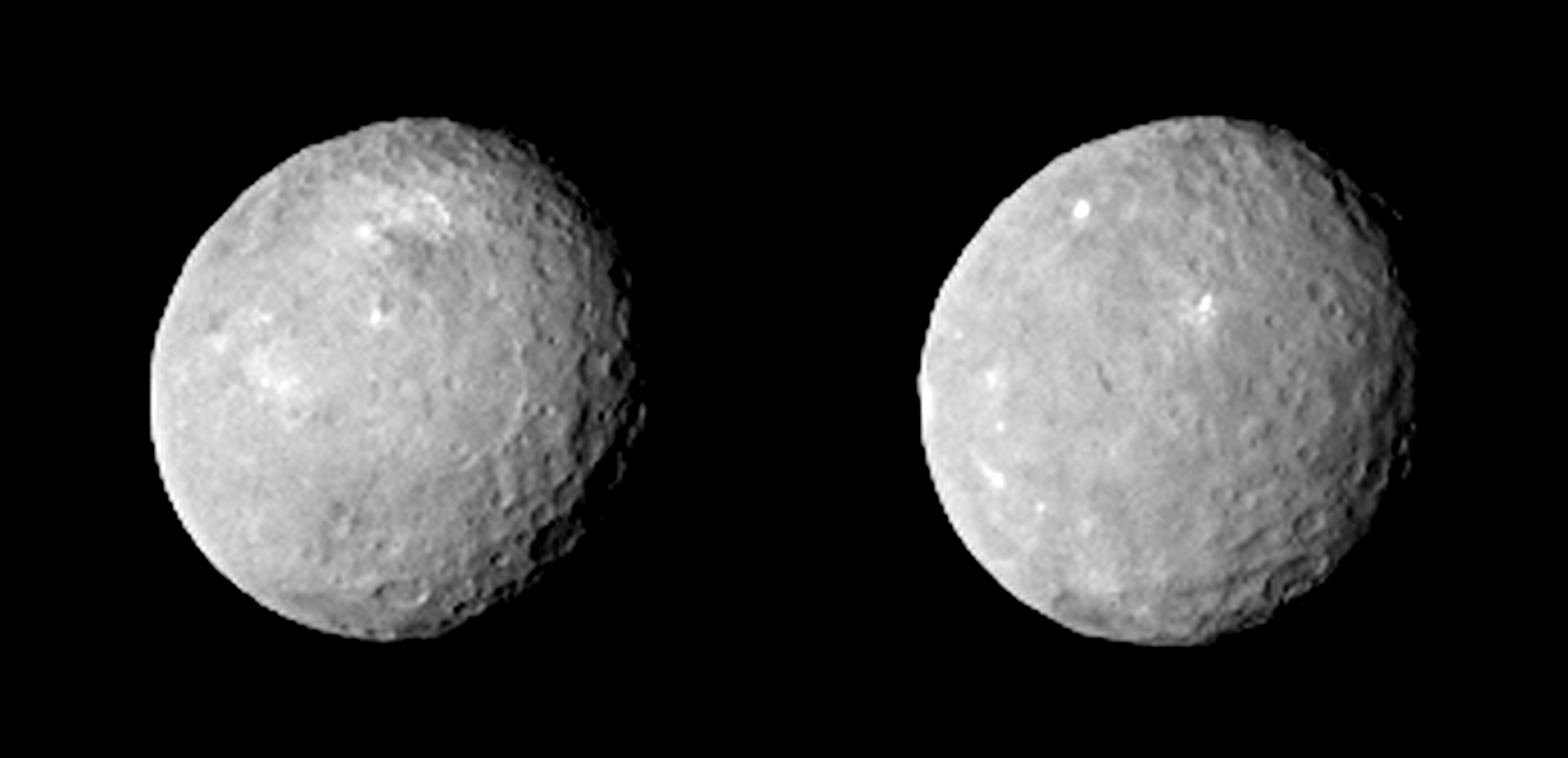
These two views of Ceres were acquired by NASA’s Dawn spacecraft on Feb. 12, 2015, from a distance of about 52,000 miles (83,000 kilometers) as the dwarf planet rotated. The images have been magnified from their original size. Credit: NASA/JPL-Caltech/UCLA/MPS/DLR/IDA
A fresh set of images of dwarf planet Ceres from NASA’s Dawn spacecraft shows it coming sharper into focus but still holding onto her mysterious nature rather tenaciously, especially with regard to the perplexing “white spots,” the mission’s lead scientist told AmericaSpace.
Indeed for the scientists “the white spots are a source of frustration for us,” Prof. Chris Russell, principal investigator for the Dawn mission, based at the University of California, Los Angeles, told AmericaSpace exclusively in a wide ranging Q&A discussion about their nature and whether there are ice patches, plumes, moons, and more at Ceres.
The white patches were first noticed in Hubble imagery from a decade ago and are much more apparent now.
“They are a source of frustration for us because we cannot determine what they are yet.”
The latest images of the dwarf planet were taken by the probe on Feb. 12 at a distance of 52,000 miles (83,000 kilometers) and released by NASA on Tuesday. That distance is equivalent to about one-fifth of the Earth-Moon distance, but still insufficient to draw firm conclusions.
“The resolution is still too course to examine their structure which could lead us to understand their source,” Russell elaborated to AmericaSpace.
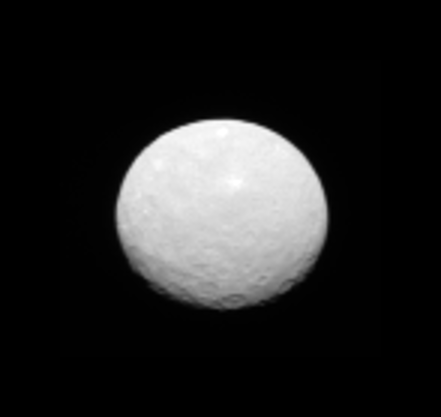
The new photos are the best yet, showing two faces of Ceres as the Texas-sized body rotates to reveal a pockmarked world, heavily crated and featuring multiple bright “white spots” that have mystified scientists and public alike.
Scientists are keenly interested in Ceres as it may harbor an ocean of liquid water as large in volume as the oceans of Earth below a thick icy mantle despite its small size—and thus could be a potential abode for life.
This writer asked Russell if the white spots could be patches of surface water ice?
“There are team members who favor this!” Russell replied.
Dawn is the first spacecraft from Earth to visit Ceres and is on course to be captured into orbit in barely 2.5 weeks, on March 6, as it continues its relatively slow approach.
It’s closing in at a relative velocity of ~45 meters/second (100 mph).
The probe will slip slowly into orbit precisely because it is powered by ion propulsion rather than chemical braking thrusters.
And because of the angle of the approach trajectory, Ceres will not be very illuminated until the end of April when Dawn reaches its initial science altitude orbit of about 8,400 miles (13,500 kilometers).
Dawn’s next imaging session is scheduled for early March, but likely won’t reveal much more.
“The next images will be a little bit better. But the resolution doesn’t get much better until late April!” Russell explained.
The images taken by Dawn’s framing camera on Feb. 12 have a resolution of 4.9 miles (7.8 kilometers) per pixel, and represent the sharpest views of Ceres to date. The framing camera was contributed by the Max Planck Institute for Solar System Research in Gottingen, Germany, and the German Aerospace Center (DLR) Institute of Planetary Research in Berlin.
They certainly exceed the resolution of those taken by NASA’s Earth-orbiting Hubble Space Telescope back in 2003 and 2004, which were our best views of Ceres until Dawn’s approach images taken in January 2015.
Are the white spots so intense that they are overwhelming the camera’s detectors? And indication on size?
“We do not know if the sources are small and intense or broad and of lesser intensity.”
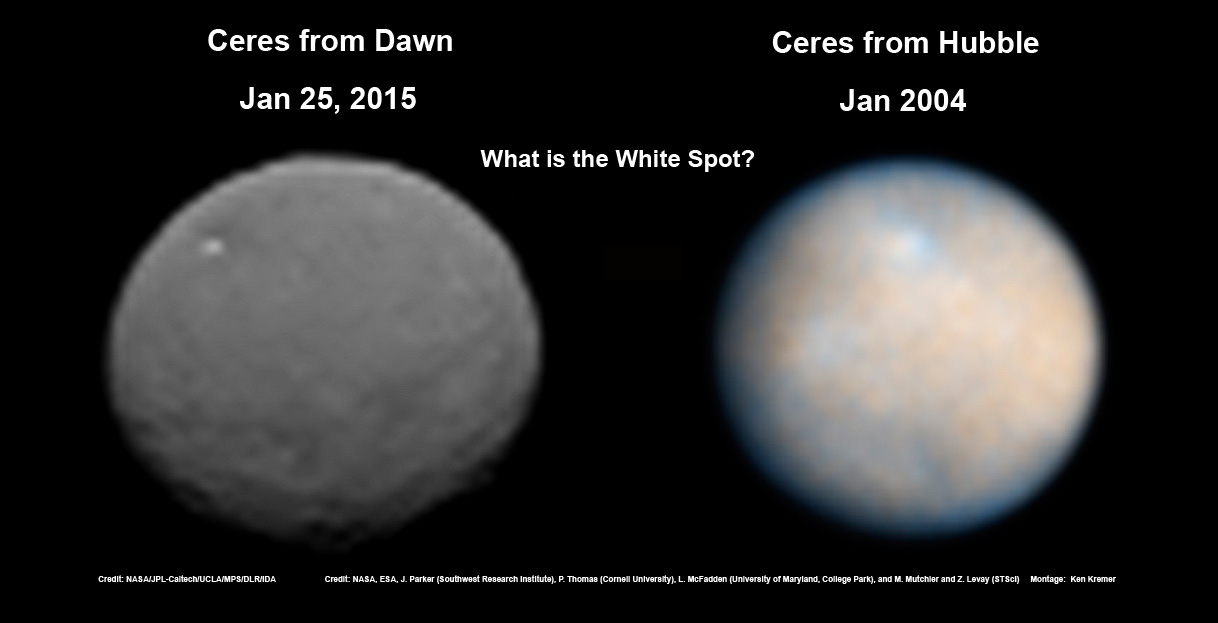
Ceres is a pristine icy world stemming from the formation of our Solar System and has never before been visited by any human-made spacecraft from Earth. It is the biggest body in the Asteroid Belt.
“Ceres is a survivor from the earliest days of the Solar System and is an example of the first bodies that formed in the solar system and that eventually came together to build the Earth and other planets,” said Russell.
“Ceres is just a ‘young planet’ even though it was formed 4.6 billion years ago!”
Could the white spots be ice volcanoes?
“At this point it could be.” But no one knows and much more analysis is needed.
“I think I am about to have a couple of frustration months waiting for the resolution to improve so we can interpret what is happening down there.”
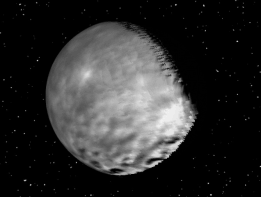
Ceres is the largest and most massive object in the main Asteroid Belt, which lies between Mars and Jupiter. It measures about the size of Texas, with a diameter of approximately 590 miles (950 kilometers). But we know next to nothing about the diminutive world.
Do you see any hints of plumes?
“We do our plume search at the beginning of May.”
This writer asked whether a fuzzy spot near the equator on the latest images from Feb. 12 could be a plume?
“We really need better resolution to decide,” Russell responded.
Any hints of Cerean moons?
“No one has reported a moon from Hubble or Dawn.”
“Actually Hubble is better at a moon search than Dawn since two reaction wheels failed.”
Dawn is an international collaborative science mission between the U.S., Germany, and Italy. It is a project from NASA’s Discovery program and managed by JPL.
The ion-powered probe is equipped with three science instruments provided by the three nations to photograph and investigate the surface mineralogy and elemental composition of the gigantic asteroid.
Besides the cameras, the other two instruments—VIR and GRaND—were provided by the Italian Space Agency and the Italian National Institute for Astrophysics and Los Alamos National Laboratory in New Mexico and the Planetary Science Institute of Tucson, Ariz.
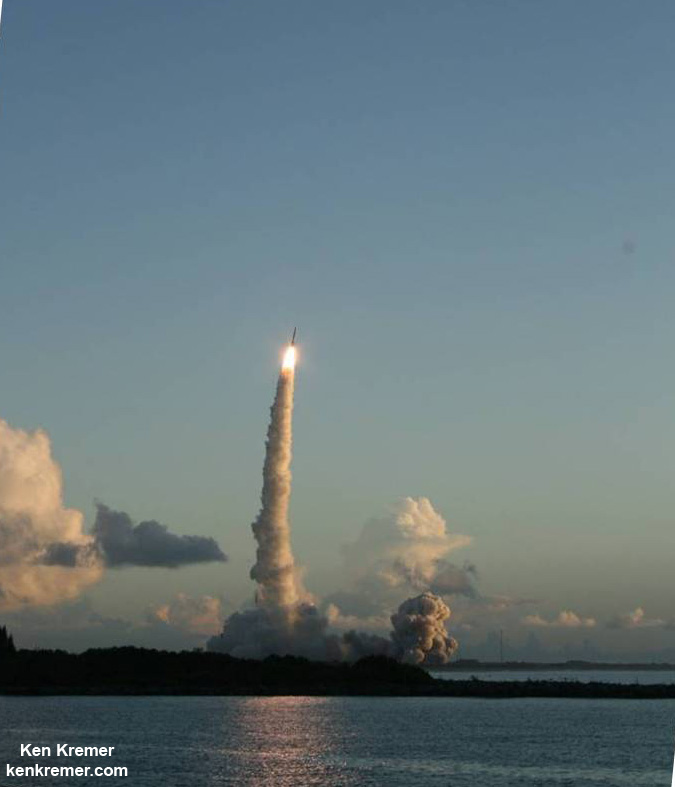
Dawn was launched Sept. 27, 2007, by a United Launch Alliance (ULA) Delta II Heavy rocket from Space Launch Complex-17B (SLC-17B) at Cape Canaveral Air Force Station, Fla.
It will soon make history as the first spacecraft to orbit two celestial bodies beyond Earth.
Dawn first visited Vesta, the second most massive asteroid in the main belt, for a year in 2011 and 2012.
“As we slowly approach the stage, our eyes transfixed on Ceres and her planetary dance, we find she has beguiled us but left us none the wiser,” says Russell. “We expected to be surprised; we did not expect to be this puzzled.”
So the nature of the white spots and other unsolved mysteries will tantalize scientists, but it will be fun and “exciting” despite the “frustration” of waiting.
“Many scientists have been looking forward to the moment when we could visit this ‘survivor of the ages’ and interview her,” Russell told AmericaSpace.
“That is what we are doing now. It really is exciting!”
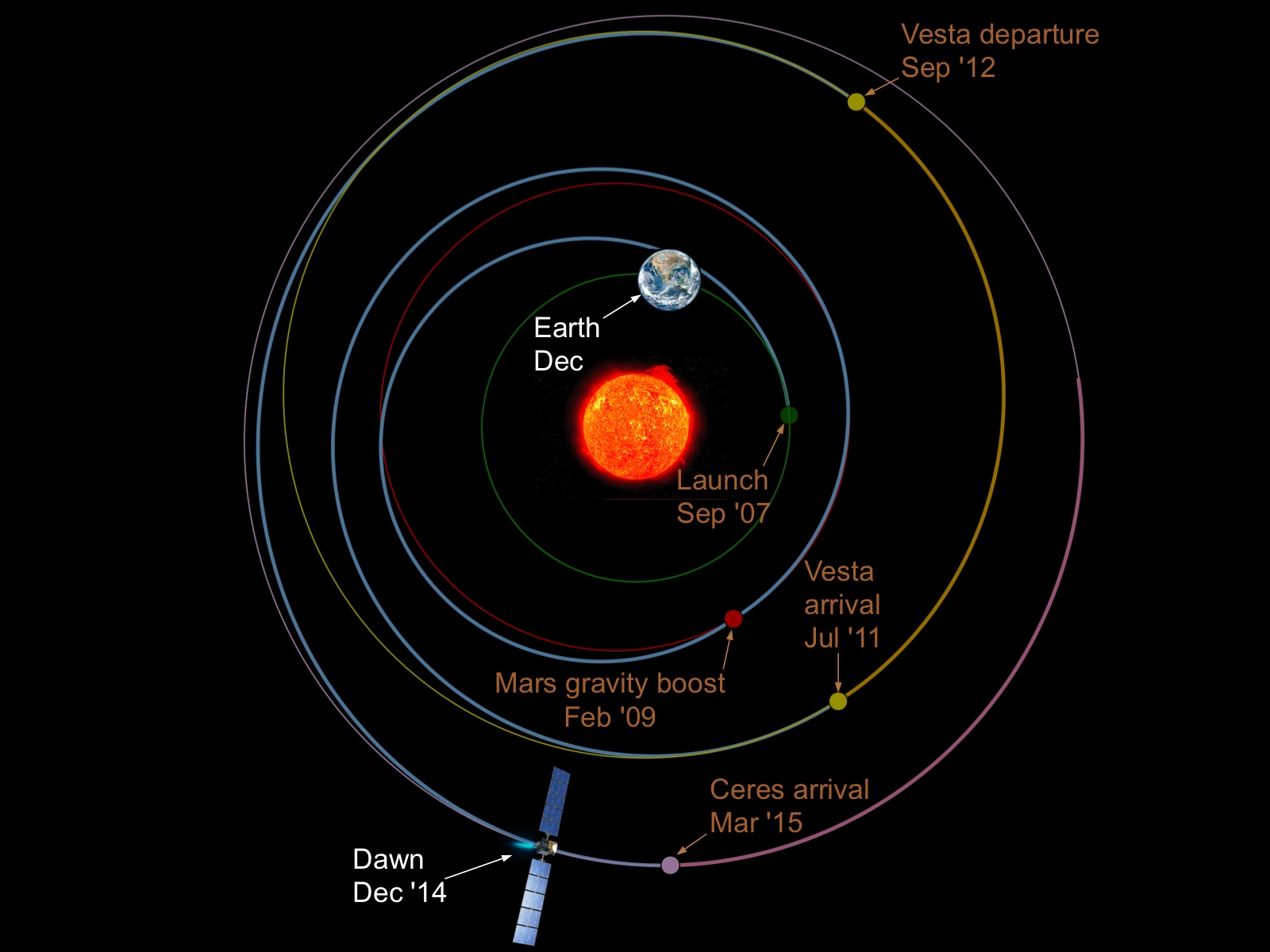
Stay tuned here for continuing updates!
Want to keep up-to-date with all things space? Be sure to “Like” AmericaSpace on Facebook and follow us on Twitter: @AmericaSpace
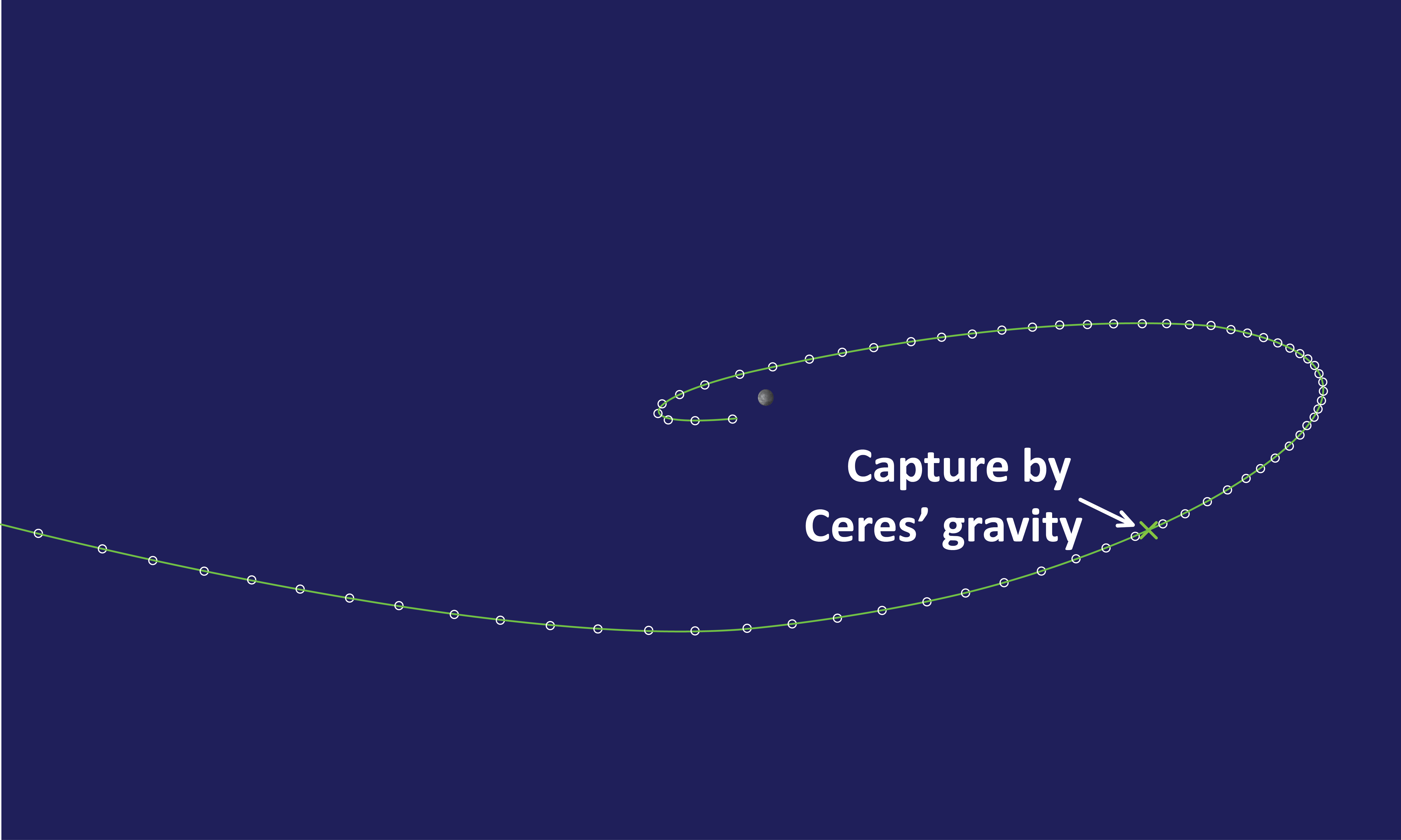




One Comment
One Ping
Pingback:Highest-Resolution Views Yet Reveal Ceres’ Mysterious Bright Spots, Seemingly Comprised of Multiple ‘Icy Spots’ « AmericaSpace